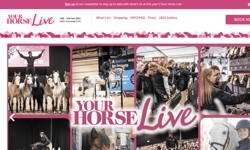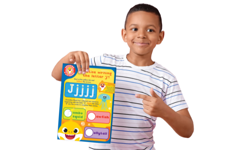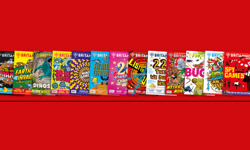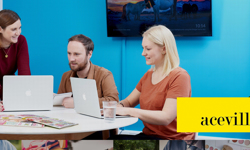
Hard to believe that less than a year ago, I was writing here that Meredith Corp’s just-announced decision to sell off its local TV stations appeared to signal a redoubled focus on, and vote of confidence in, the future of magazine brands.
Well, that was Meredith’s pitch at the time. “As a more focused company with an enhanced balance sheet and cash-generating media assets, we will further advance our position as a media leader with trusted brands, a digital business of scale, and unparalleled reach to women,” vowed Meredith’s then-CEO Tom Harty.
Like anyone who’s been awake during the magazine industry’s radical consolidation over the past decade, I realised it was possible that Meredith’s real strategy was to split and sell off both “more focused” businesses. But it also seemed plausible that, even if they were to sell off the two weeklies that didn’t fit their monthly / recyclable content model (People and Entertainment Weekly), they saw a profitable, digitally driven path forward for brands like Better Homes & Gardens, Food & Wine, Travel & Leisure and Southern Living. I wasn’t alone: Veteran publishing exec Rick Edmunds, now an analyst for the Poynter Institute, also thought (hoped?) that Meredith was “doubling down on its magazine roots”.
The $2.8-billion sale of the TV division to Gray TV was announced in May. In October, Meredith unveiled a $2.7-billion deal to sell the entire magazine business to Dotdash, a native-digital publishing company owned by IAC / Interactive. Thus ending a 120-year-old company and leaving only Condé Nast and Hearst as surviving major, US-founded native-to-print magazine publishers.
But the time for wistfulness over the demise of traditional magazine publishers ended definitively when Time Inc, beaten to a pulp by the disastrous AOL-Time Warner merger, was acquired by Meredith for $2.8 billion in 2018. Even before that, Condé Nast and Hearst were themselves frantically working to shed reliance on print and adopt new business models. Both of which are paying off, according to the latest declarations from the privately owned companies. Condé Nast recently said that it saw a profit in 2021 for the first time in years, spurred by international brand consolidation, digital video, digital paywalls and affiliate-based ecommerce. Hearst corporate said that revenues and profits exceeded pre-pandemic levels, driven by its aggressive diversification into non-media businesses like financial and health care data (and recently, a classic car-sales site). Magazines and newspapers saw some “bounce back” – and are part of a $100-million new-products push this year, including focus on “exploiting the booming subscription economy” and pumping up advertising with more ecommerce.
As for Meredith, after being burned on the Time Inc buy and reducing the debt by selling venerable titles to tech barons (Time, Fortune) and brand managers (Sports Illustrated) rather than traditional publishers, Dotdash must’ve looked like an answered prayer. In retrospect, given the rush to the altar, the Dotdash deal was probably quietly in the works for some time, just waiting for the Gray sale to be consummated.
Dotdash may at first glance seem like a black-horse acquirer for the world’s largest magazine company. But in just a few years, it had emerged as a quite-formidable search / ecommerce engine comprising 14 acquired and self-created verticals like Simply Recipes, The Spruce, Verywell, Investopedia and Brides (still a print brand when purchased from Condé Nast in 2019). Last year, before the Meredith buy was finalised on December 1, Dotdash had 30%-plus adjusted profit margins and more than $250 million in revenue, according to Axios. Between 2019 and 2021, its revenue compounded at 33% annually. Analysts estimated its value at about $2 billion.
The Dotdash deal was probably quietly in the works for some time, just waiting for the Gray sale to be consummated.
Clear synergies
And when you look at all the pieces, it’s clear why the Meredith buy was a synergistic coup for Dotdash. As we know, Meredith’s model was based on digital and print advertising (the former outstripped the latter just before the Dotdash sale), subscription and newsstand sales and licensing. But the biggest draws for Dotdash were the “evergreen,” DIY and lifestyle-focused content over two dozen brands and 40+ websites, attracting mass audiences; its trove of first-party data and reach to 95% of US women; and Foundry, its native advertising agency.
Dotdash’s network is purpose-built for attracting people searching for answers or practical information. The core business model is running “intent-driven” contextual ad campaigns at scale. With Meredith, it now claims 188 million monthly users, and its rather ballsy goal is competing head-on for advertising with the major platforms. But ecommerce has emerged as a second major focus.
Dotdash’s “performance marketing” businesses include affiliate commerce and commerce partnerships with bigger retailers (it sells its own paint and pet-care products through Amazon, for example). And importantly, last year, it launched its first standalone online store, Liquor.com – the first of many planned stores tied to its vertical sites. “Between 35% to 40% of our business is helping people buy stuff,” CEO Neil Vogel told Axios, noting that total 2021 ecommerce revenue (pre-Meredith) was “well above” $100 million.
In a complete non-surprise, two months after its formation, Dotdash Meredith announced it would shutter the print editions of six Meredith titles – EW, InStyle, EatingWell, Health, Parents and People en Español – and eliminate 200 jobs. Prior to the acquisition, Dotdash said that it had no “immediate” plans to kill print editions. (Well, they did wait eight weeks.) And while Dotdash CFO Tim Quinn told investors, pre-acquisition, that the combined company would cut about $50 million in costs in 2022 by expunging “duplicative corporate overhead,” Vogel quickly issued a denial, insisting that no “cost synergy” cuts were planned. “Our playbook is going to drive audience, performance, and help the brands maintain their stance in the digital world that they have in the print world,” he said.
Except People en Español, all the titles that had their print editions folded had more than a million print subscribers (ranging from 1.4 million to 2.2 million). But given the pandemic’s toll on print advertising, and probably significant numbers of discounted subs, who knows what their balance sheets looked like? Further, as Vogel pointed out, “We have said from the beginning that buying Meredith was about buying brands, not magazines or websites. It is not news to anyone that there has been a pronounced shift in readership and advertising from print to digital, and as a result, for a few important brands, print is no longer serving the brand’s core purpose.” Still, he insisted that the move was not “another nail in print’s coffin,” and that the company plans to improve the paper and trim sizes of the 19 remaining print magazines, and invest $80 million in content across all brands. Is Dotdash planning to emulate Hearst’s strategy of keeping print for some brands but cutting print frequencies while upping prices, along with quality? Dotdash does seem to see sponsorship opportunities in Meredith’s numerous newsstand “special issues” (bookazines), as well as in including print in some ad packages, for now.
Intent-driven contextual advertising beats cookie-based advertising in performance every time.
Neil Vogel
Context is all
But far less print may be the least of the changes in store for Meredith brands. Also in February, Vogel consolidated the Dotdash and Meredith ad sales teams and “unified their ad stacks with a focus on contextual targeting,” he told AdExchanger. Each brand will now be overseen by a general manager who acts as a “mini-CEO” and “owns all pieces of that brand, from content to product to tech,” he said. The company will realise big yield improvements through the ad-stack consolidation, and as the sites become more “performant,” programmatic ads become more valuable. “Intent-driven contextual advertising beats cookie-based advertising in performance every time,” he said.
Given the looming extinction of cookies due to privacy regulations and operating changes in Apple iOS and Google, contextual is indeed the new secret sauce. Dotdash said in its acquisition release that its ad targeting would be based “not on a reliance on private information or personal history but on relevancy to the content they’re consuming” and… “a deep understanding of their needs.” Whether this is less intrusive for consumers, however (even assuming all data is anonymised), is open to debate. What it means is that instead of using third-party data, Dotdash will leverage a “Data Studio” created by Meredith. This strategic weapon harnesses Meredith’s “vast proprietary first-party data, intent signals and predictive insights to inform marketing, product, and business strategies,” including creating content opportunities for big-brand marketing partners, according to Alysia Borsa, chief business officer and president of lifestyle at Dotdash Meredith.
Meredith took its “rich, exclusive data with massive scale in content-rich environments and built an in-depth 12,000+-term taxonomy, a proprietary identity graph and over 12 billion intent signals to achieve a comprehensive understanding of women and their intent,” she recently told FIPP. The company will also continue to hone its use of artificial intelligence to predict behaviour / deliver personalised content, she said. Still, “We must be transparent with consumers about how we’re capturing that first-party data and provide a compelling value exchange for consumers,” she added.
Dotdash didn’t specify what it means by “investing in content” across its brands, but The Des Moines Register noted that the company “invests heavily in computer analytics to determine what information people are seeking out online,” and “editors often assign articles to answer those specific questions”.
Its new online store is selling “a handful of items, curated by Liquor.com’s editorial team,” though at some point, such stores may feature mostly Dotdash’s own products, Vogel has said. Not unlike the pioneering Good Housekeeping, Dotdash has its own testing lab in Brooklyn, “where its editorial teams test thousands of products to make affiliation recommendations,” per Axios. Some of its verticals recommend services – including therapists.
Its rather ballsy goal is competing head-on for advertising with the major platforms.
Age of engineered content dawns
In February, a senior editor at Entertainment Weekly told the Des Moines newspaper that employees are worried that the search-engine-focused Dotdash team will steer EW away from the writing, book reviews and cultural criticism valued by loyal readers in favour of seeking users looking for intent-based info like lists of actors’ film credits. “If we’re allowed to be in charge of it ourselves, I feel really good about the soul [of EW] remaining,” she said, but “I don’t feel good about being supported from on high.”
Dotdash makes a point of stressing that it’s focused on “superior content, strong, authoritative editorial voices, and respectful advertising.” Let’s hope that Meredith’s brands have indeed found such a home. In any case, it certainly looks like algorithmic decisioning, ecommerce and contextual targeting (soon to be augmented by Web3) are the new order when it comes to what is still being called publishing. At least when the content is at all “intent driven” and therefore imminently “monetisable” via ecommerce and ads. And that may be what younger consumers want – or have at least come to expect / accept.
So I guess that the dwindling band of us who don’t delight in having our “intentions” read and having content fed to (or even created for) us on that basis, or in having our every online move turned into a would-be ecommerce transaction, should be grateful that we can still (as of this writing) find spontaneous, creative writing, analysis and opinions, sans advertiser influence – yes, something like a “soul” – in the sites (and even pages!) of old standbys like The New Yorker, The Atlantic and Harper’s, plus a number of new indies from passionate, enlightened young people.
We have said from the beginning that buying Meredith was about buying brands, not magazines or websites.
Neil Vogel
This article was first published in InPublishing magazine. If you would like to be added to the free mailing list, please register here.










